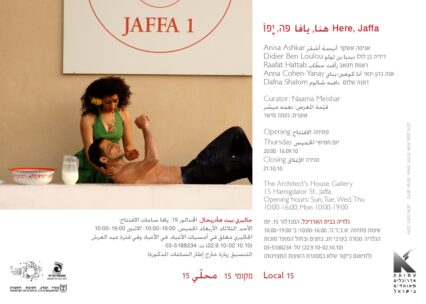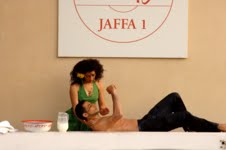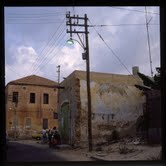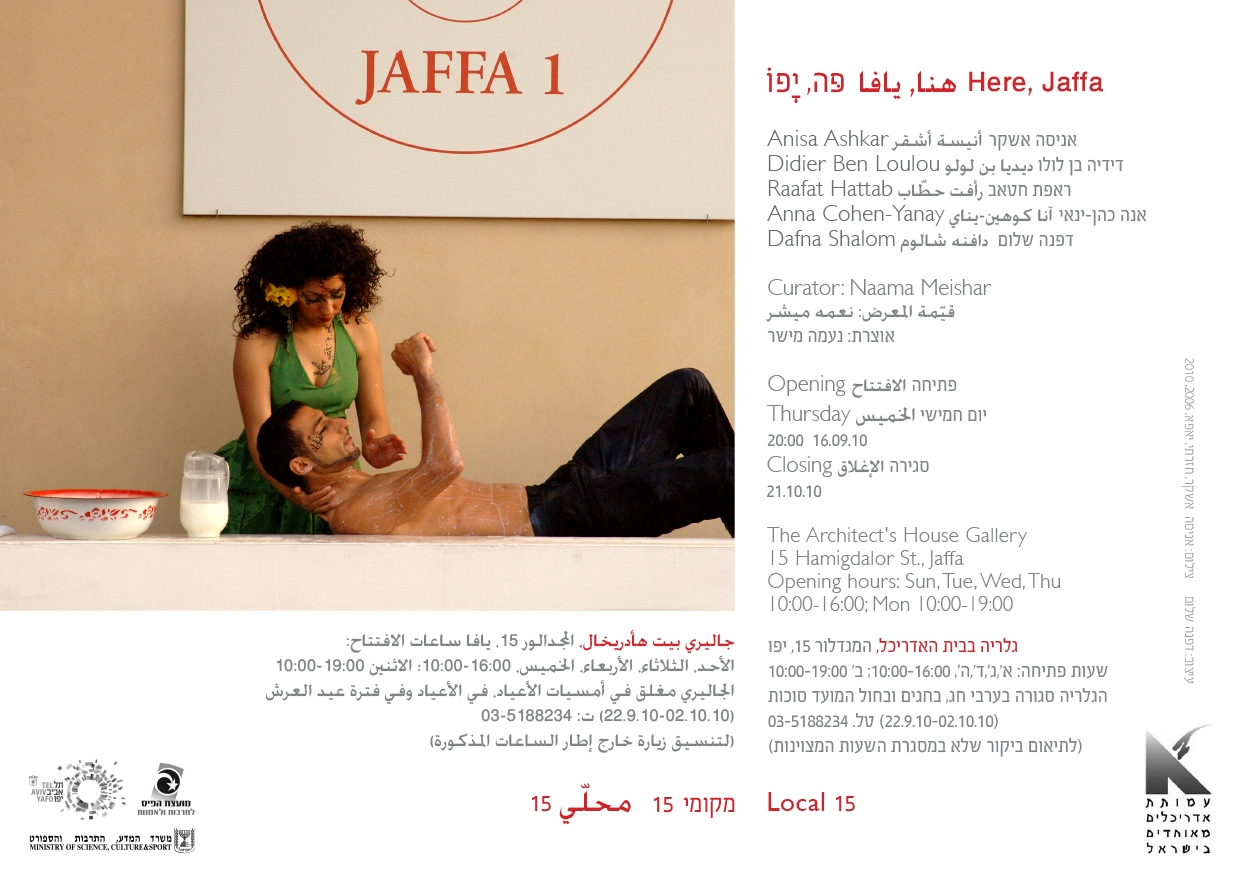The passion of the artists in the exhibition Here, Jaffa—Anisa Ashkar, Dafna Shalom, Didier Ben Loulou, Raafat Hattab and Anna Cohen-Yanai—for the esthetics of the seen and heard is entangled in a moral debt to the history of the city of Jaffa. Here, Jaffa is attentive to twentieth-century events—to Jaffa’s evolution into a modern Palestinian city, to its destruction as such and to the continuous devastation it has suffered since 1948, when it was almost emptied of its inhabitants, who became refugees, and flooded with Jewish refugees. It is also attentive to current events, in which individuals and communities are being displaced as a result of the planning and development policies of the Tel Aviv–Jaffa municipality and governmental land policies (Wallerstein and Silverman, 2009). In poetry and in colloquial spoken language, in the positions of the photographer and the object, the continuous work of these artists creates, implicitly or explicitly, their identifications with a national group, a culture and a religion. These identifications of the artists—those belonging to the dominating group and those belonging to the subordinate one—are necessary grounds for acknowledging the losses, processing the different pains of both groups and taking responsibility. But these identifications are also transformed by the artistic expressions and are stretched anew over a mixed identification axis, rendering social and spatial boundaries—saturated with domination and subordination—flexible and supple. The refusal to be bound by collective borders—spatial or social, material or imagined—is manifested in the body images as well as in the images of the city. The body is indeed marked by signs of belonging and identification, but it is even more present when it is stripped of them—shivering from the cold, bleeding or deserted, gesturing to Jaffa, whose image is spread to include the reality of its ruins and its multifaceted boundaries. These boundaries are blurred by the intersecting demands of its residents, refugees and destroyers and are crossed in different directions— through the branding of the city’s image in the skin, into the depths of its sea, amongst the debris of its ruins, within the interior of the homey and towards its daughter who has devoured her, the adjacent Tel Aviv. Human figures, animal figures and city figures are brought into the exhibition Here, Jaffa, marked by signs of belonging, but their reality and corporeality are surpassed by the passage through the mythical and the transcendental, beyond the Here, Jaffa 136 possibility of fixating or generalizing them. Along with our transcendental experience, we the viewers are called to come frighteningly and adventurously closer to an Otherness that is lurking within the self. Thus, between self-identification and the differentiation of that which is identical to the self, in sensitivity to the Other and Othernesses and in being responsible for them, the works entangle in an insoluble manner the spatial with the corporeal and the public-political with the intimate and the singular.



